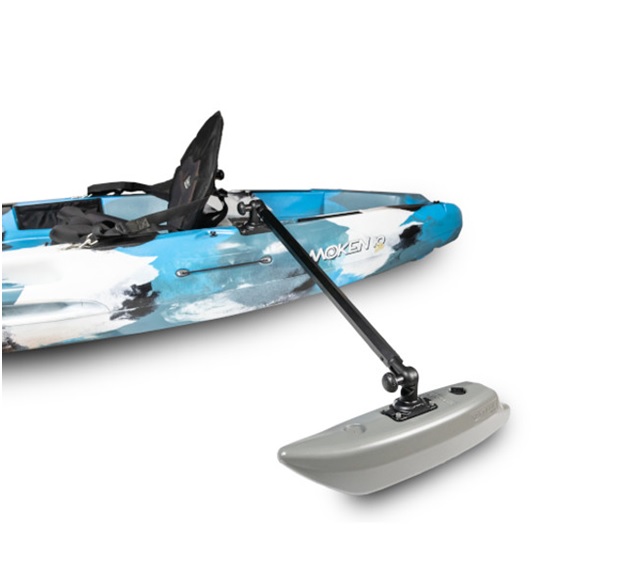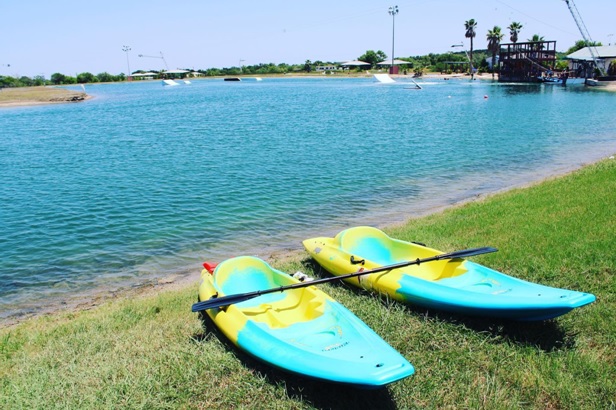Posted by Forrest on Nov 20th 2023
Beyond Outriggers for a Kayak: Improving Stability
Kayaks can feel tippy. This is the nature of the sport, especially with lightweight sit-in kayaks that are narrow and have thin hulls.
Not every vessel under the sun is going to be an ultra-wide, ultra-stable fishing kayak with a wide open cockpit and a heavy hull to keep it tracking and holding straight.
One of the best things you can do to improve stability is to add outriggers to a kayak, which we will cover in this post, along with a few extra tips.
How Adding Outriggers to a Kayak Improves Stability
Outriggers for a kayak are basically a set of additional “mini” hulls that you can add to both sides of the kayak, effectively widening the main hull of the craft.
These are like accessory points that span over the port and starboard sides of the craft and hold it steady in the water, which can be a big blessing while you are learning, or in a chop.
Here at No Bad Days Kayaks, we sell ready-to-install outriggers for kayaks from YakGear which can easily attach to a kayak’s rail using a RAILBLAZA StarPort HD mount. They are sold in pairs, are adjustable, and provide float bases roughly 22” from the starboard and port sides of the boat.
Kayak upgrades like these can be indispensable in terms of improving craft stability, and they can also raised or removed at any time to facilitate docking, portage, and transport.

What Else Can You Do?
Adding outriggers to a kayak or canoe can vastly improve the vessel’s stability, but this step is not the only one you can take to feel more secure and comfortable on the water.
Consider also the following tips.
Pack Low, Pack Smart
The handling and stability of even the heaviest, most stable kayaks can benefit from packing your gear wisely.
Basically, you want everything heavy distributed evenly around the vessel of the hull. Manufacturers are attentive to how the craft is engineered and place hatches and ports in strategic areas, but if you overload these, make sure all weight is evenly distributed around the craft.
If you have gear tied down on the deck, make sure the heaviest gear is in the lowest possible space, and in the centerline of the kayak. Lighter gear should be packed on top, so as to keep the center of mass as low and central to the keel as possible. Keeping heavy gear low helps counteract the propensity of the kayak to want to roll.
Get Low
Next comes how you’re sitting in the kayak. Unless you’re fishing from a kayak that is stable enough to stand in, every inch you sit higher in the cockpit will rob you of stability and ease of handling.
Lower your seat as low as possible and see how the kayak handles in the water, on a calm, windless day. If it handles well but you’re not comfortable, you can raise the seat a little, but be conservative. Each inch you raise the seat will make the vessel friskier, and those problems will be magnified when the weather doesn’t cooperate.
All else being equal, sit with your seat at the lowest possible adjustment.
Ballast
If your kayak does not handle well and you don’t have any gear to bring, you can make up for that. It’s called ballast, and it’s basically extra stuff you bring along to help stabilize the craft.
You don’t need to pack gear, though. The easiest way to add ballast weight to a craft is with water. If you have any large jugs, fill up several and place them low in the holds or along the center of the craft to hold it steady. For most kayaks, you’ll need several gallons worth to notice a difference.
In extra cases, you can use sandbags or bags full of shot. Even a few rocks from the shore placed in the holds or along the keel can help the kayak handle better.
Practice Makes Better: Balance Drills
The best way to conquer the instability of a kayak is to practice.
One way is through a common balance drill that will require you to pull your kayak right alongside the edge of some structure - for instance, a dock.
Hold onto the dock with one side of your body and lean over until the kayak starts to roll; using your support arm on the dock to prevent it from tipping, try to balance at the tipping point for as long as possible. Focus your balancing efforts on your core muscles.
Turn about and repeat the process on the other side. This will strengthen your back and core and, in time, will make it easier for you to respond to a tipping kayak instinctually.

Know How to Read a Kayak Hull Before You Buy: Buy for Stability
It’s also important to remember not to row against the current 100% of the time, figuratively speaking. Some kayaks are more stable than others. If yours feels too frisky, maybe you should be fishing in something else.
We carry a wide range of fishing kayaks, many of which are sit-on-top models that are wide and heavy, with open cockpits and decks that are designed to be stable enough for you to easily stand and fish in them.
As important as practice and drilling can be, rather than lowering your seat and adding ballast, it might be better for you just to get a model that is stable enough for you to stand in from the start.
Take a look through our catalog and get in touch with us if you want personalized recommendations. If stability is your main concern, we can make specific recommendations to make sure you end up with a craft that suits your needs.

